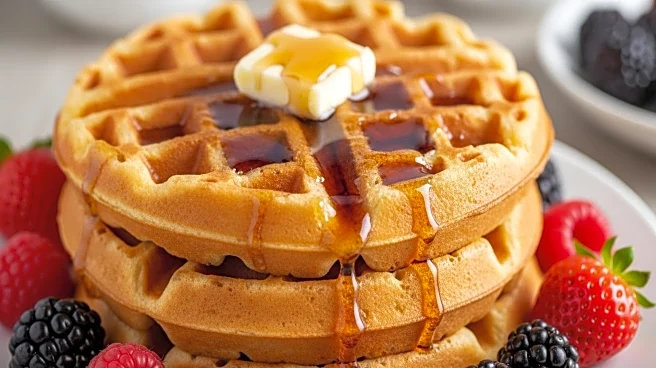Waffles are a beloved food item enjoyed by many across the globe, particularly in the United States. Known for their grid-like appearance and crispy texture, waffles are made from a batter consisting of flour, water, baking powder, oil, and eggs. They are cooked in a waffle iron, which gives them their distinctive shape. Waffles can be served as a breakfast dish or dessert, often accompanied by sweet toppings such as syrup, fruit, or whipped cream.
Origins and Ingredients
Waffles have a rich history, with their origins tracing back to Europe. They were introduced to North America in 1620 by Pilgrims who brought the method from Holland. The basic ingredients for waffles include flour, water, baking powder, oil, and eggs, which are mixed to form a batter. This batter is then poured into a waffle iron, where it is cooked until golden brown.
Signature Preparations
American waffles are typically round, square, or rectangular and are often served as a sweet breakfast food. They are commonly topped with butter and maple syrup, but can also be paired with bacon, fruit syrups, honey, or powdered sugar. Waffles are versatile and can be found in savory dishes, such as fried chicken and waffles or topped with kidney stew.
Regional Variations
While American waffles are popular, there are various regional variations. For instance, the stroopwafel from the Netherlands consists of two thin wafers filled with a syrupy mixture. In northern France, the gaufre fourrée lilloise is a local waffle filled with cassonade sugar and vanilla.
Cultural Significance
Waffles hold cultural significance as a staple breakfast item in many households. They are often associated with comfort food and are a popular choice for brunches and family gatherings. Their versatility allows them to be adapted to different tastes and preferences, making them a cherished dish worldwide.

 Discover Daily
Discover Daily 












